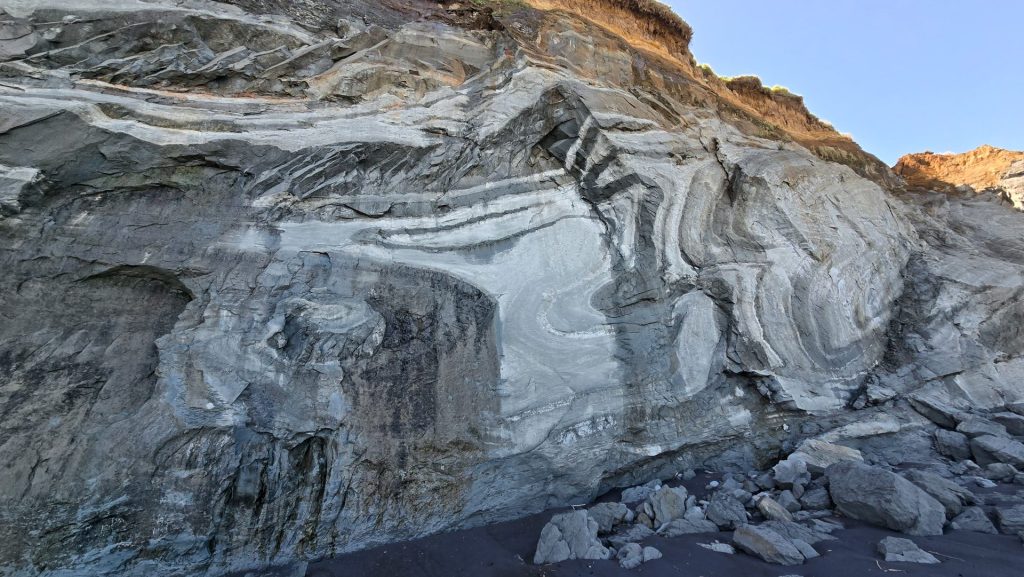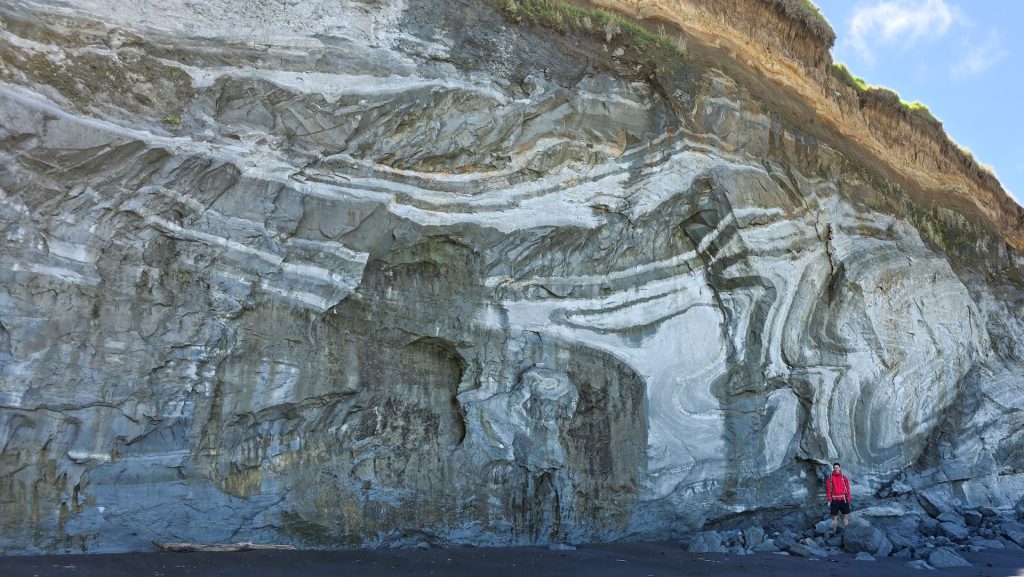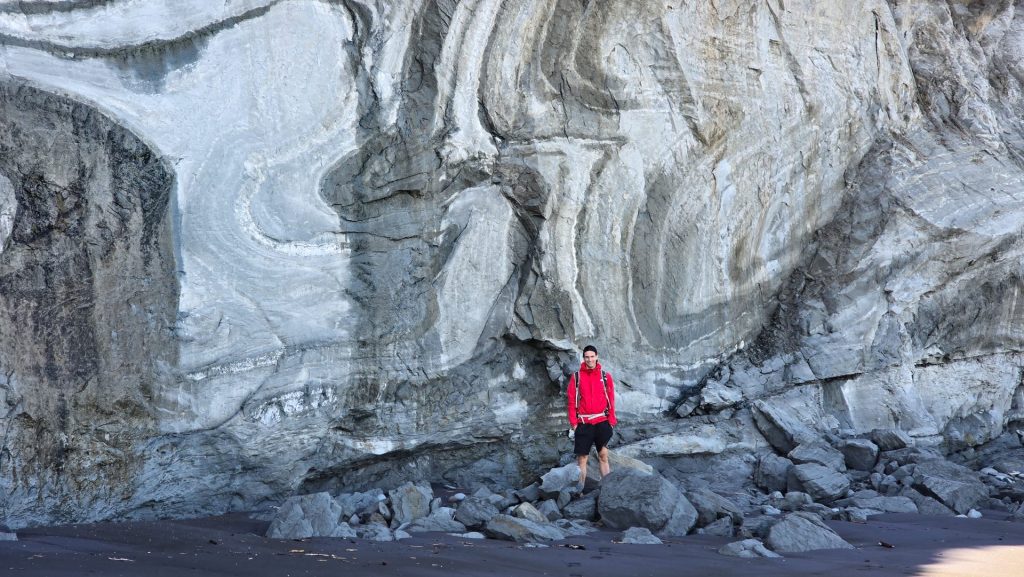- Home
- /
- Projects
- /
- Exploration New Zealand
- /
- The Black and White...
The dramatic folds visible in the cliff face in Taranaki are a spectacular example of soft-sediment deformation, likely formed within marine sedimentary rocks dating back to the Late Miocene epoch (roughly 11 to 5 million years ago). These layers, originally deposited horizontally or near-horizontally on the seabed as alternating beds of sand (lighter layers) and mud/silt (darker layers), were still unconsolidated and water-saturated when they became unstable. This instability likely triggered a submarine slump or slide, where a large mass of sediment moved downslope under gravity, perhaps initiated by an earthquake or rapid sediment loading. During this slumping process, the soft, pliable layers were intensely folded, contorted, and mixed together, creating the complex swirling patterns observed. Subsequently, these deformed sediments were buried by younger deposits, compacted, hardened into rock and eventually uplifted and exposed by coastal erosion.
- Home
- /
- Projects
- /
- Exploration New Zealand
- /
- The Black and White...



